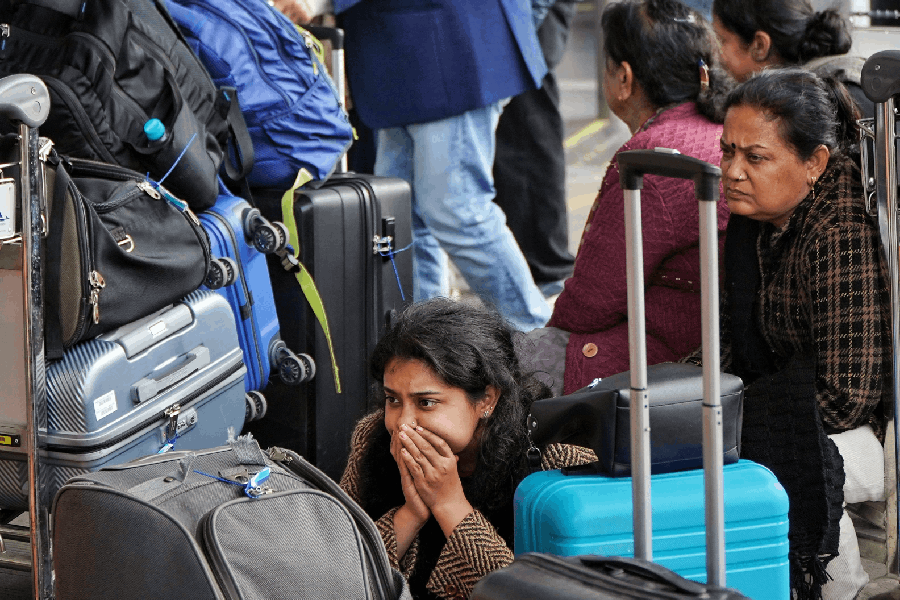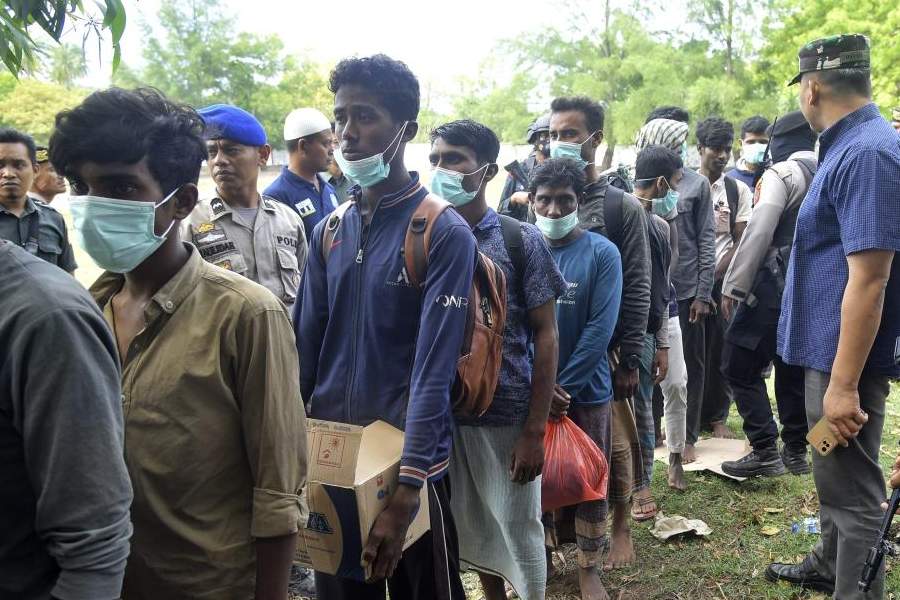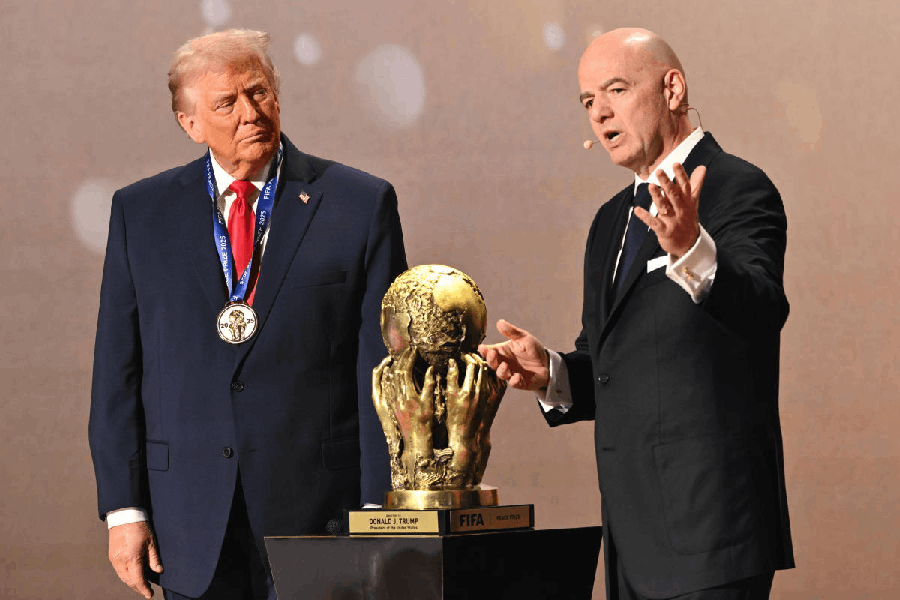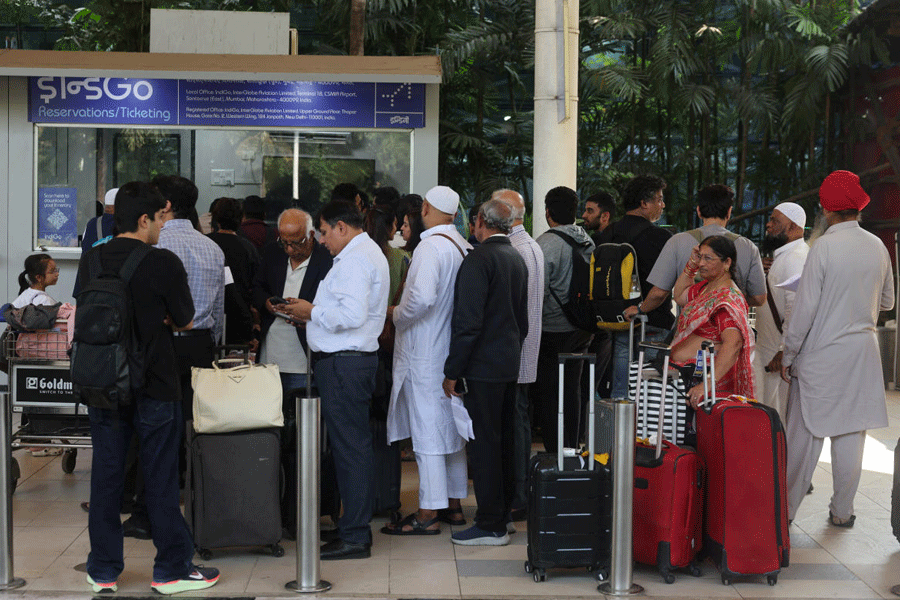 |
In the dead of night early on Wednesday, football revealed a continental divide in Calcutta that many might have thought was restricted to two Latin American swathes called Brazil Para and Argentina Nagar.
If one section of the city slumped into despair like Krishnendu Biswas did —“Wiping my tears every now and then,” he wrote on Facebook — the other was bubbling over with excitement like a mug of good German beer.
While one group lamented the exit of a team holding on to the legend of Latin American flair, another was celebrating a brand of football they had grown used to watching: organised, tactical and with an overriding emphasis on the team over the star.
Germany’s clinical 7-1 demolition of Brazil not just reignited the clash of continents at the Fifa World Cup but also confirmed that Calcutta has diversified its allegiance. Germany, The Netherlands, Spain, England, France and Italy now evoke equal passion among the city’s football faithful as the traditional Selecao and La Albicileste.
“I have always been a supporter of Germany. The beauty of their game is that the team is not dependent on an individual,” panchayat minister Subrata Mukherjee said.
Unlike many other Brazil supporters in Mamata Banerjee’s cabinet, Mukherjee looked upbeat as he turned up in office on Thursday. “The Germans play the game scientifically,” he said with a smile.
Sports minister Madan Mitra looked less than cheerful. He had left his TV room after Brazil conceded the third goal. “I have decided not to watch football,” Mitra said.
From the nooks of Naktala to the corridors of Nabanna, at the para tea stall or on Twitter, the city spent the day dissecting and debating the semi-final. What emerged was a generation gap of continental choices, though there are exceptions like minister Mukherjee. While the older Calcuttan is more likely to be a Latin America supporter, the younger isn’t quite so.
For Alipore resident Prabir Sengupta, 56, football means Brazil, a team whose attacking flair in the Sixties and Seventies made him fall in love with the sport. His son Prateem, 25, swears by the Dutch. “Football was all about Brazil when I was growing up. That love has continued even though the gap between their style and the Europeans is narrowing,” said Sengupta, who didn’t watch Brazil’s demolition past half-time.
The advent of colour television in the eighties coincided with the rise of Diego Maradona and his ultimate triumph in Mexico 1986, the first World Cup that penetrated bedrooms and drawing rooms in Calcutta. “Maradona is the greatest that I have seen...I haven’t watched enough of Pele to form an opinion,” Sourav Ganguly had told The Telegraph in 2008.
It is the same for 34-year-old Arijit Banerjee, an IT executive. “While many had heard of Pele’s skills, we got to watch Maradona live and our growing-up years were shaped by stories about his larger-than-life personality in sports magazines. It was a clear Latin America clash at the time.”
If the Seventies belonged to the men in canary yellow, the Eighties saw the white-and-blue capture the imagination of the city. Thereafter, the Nineties and the new millennium became a battleground for the South American giants to battle it out for supremacy in this sports-loving city.
The arrival of international football on Indian television spawned a generation of Europe loyalists. Towards the end of the Nineties, names like David Beckham, Zinedine Zidane and Paolo Maldini started sharing headlines with the Ronaldos and the Batistutas. With growing exposure to European football, where the best ply their trade, the school and college generation that swears by Barcelona and Manchester United and Bayern Munich naturally started rooting for Spain, England and Germany when their stars donned national colours.
“As I started following the Premiership and La Liga and began to understand the sport, I started appreciating the tactical aspect of it and realised that intelligent disciplined football is as important as skills,” said Prateem, who roots for Manchester United.
While age is a rough line of division that splits loyalties, it is not a watertight one. Families too apparently help shape who supports whom.
Mahadyuti Adhikary, 28, got his Argentina fan gene from his father, who worshipped Maradona. “I remember watching the final of the 1990 event with my father and crying at the age of six when Maradona failed to lift the cup,” he said.
But in a fully globalised footballing world, most fans are going by personal choice of players, be it Argentina because of Lionel Messi, Germany because of Mesut Ozil or even Belgium because of its rising stars like Eden Hazard. Allegiance to a team is now shaped not by its reputation alone but also the popularity of its players in the club leagues. Messi is not just Argentina. He is also Barcelona. Ozil is Arsenal and Hazard is Chelsea.
“Being a Bayern Munich fan, it was natural to support Germany. Half the players are from Bayern,” said Aditya Bhattacharya, 25, who sat wearing the German jersey on Tuesday night.
Whether that means the Calcutta football fan has evolved, another World Cup will tell!
Additional reporting by Kinsuk Basu
Which World Cup team do you support and why? Tell ttmetro@abpmail.com











